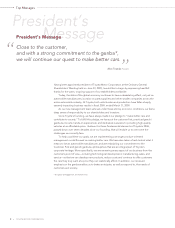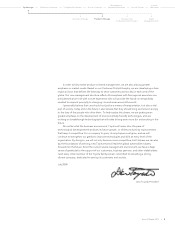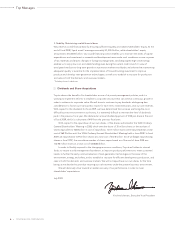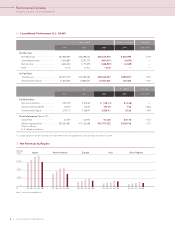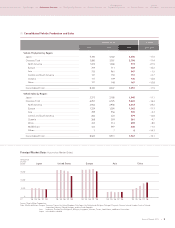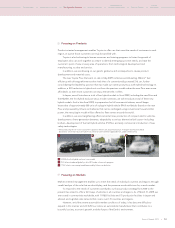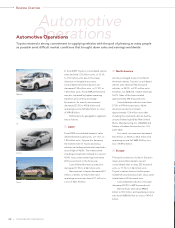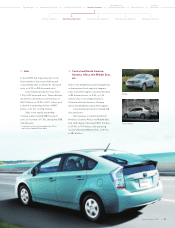Toyota 2009 Annual Report Download - page 13
Download and view the complete annual report
Please find page 13 of the 2009 Toyota annual report below. You can navigate through the pages in the report by either clicking on the pages listed below, or by using the keyword search tool below to find specific information within the annual report.
Local Roots, for Local Economic Growth
In 1938, just one year after the Company’s founding, Toyota opened its first mass production facility in
Koromo, Japan. It was a clear demonstration of Toyota’s desire to contribute to the economic growth of the
nation by pioneering the creation of a domestic automobile industry. This strong commitment to making
better cars and contributing to society through product creation still lives on at Toyota today.
Contributing to society means responding to the needs of society and enabling people to lead more
bountiful lives by providing them with better cars. And as a corporate citizen, it means putting down local
roots, paying taxes, and helping regional economies to prosper.
Toyota’s history shows this spirit of monozukuri product creation in action.
Working Together to Overcome Obstacles
Toyota’s history is also a history of tribulations. We faced a management crisis in 1950, pollution problems and
oil crises in the 1970s, and trade issues and voluntary export controls in the 1980s. But whatever obstacles we
faced, we overcame them by working together with our suppliers and dealers, using imagination and creativity.
Along with our corporate culture of Customer First and the genba first, the Companywide emphasis on
technological development, and a healthy corporate environment in which people can teach and be taught—
continually learning from one other—it is this ability to work together that is one of our great strengths.
Beginning in fiscal 2003, we increased our production capacity by more than 500,000 vehicles a year.
Although this enabled us to meet our customers’ needs, in the end it did not allow us to capitalize on our
fundamental strengths. Now, when the entire automobile industry is threatened, it is more important than ever
for every employee to share a sense of emergency, and work together as a group to better serve customers
and society, realizing the full potential of our Toyota strengths to establish a solid foundation from which to
overcome the serious challenges we face.
A B C
AA1 prototype passenger car produced by the Toyoda Automatic Loom Works, Ltd. Automobile Department
(currently Toyota Motor Corporation) in the year of its establishment
BG1 truck, Toyota’s first export vehicle, being loaded for shipment to China
CProduction line at Toyota’s first mass production factory in Koromo, Japan (currently Honsha Plant)
Overcoming Challenges—Toyota Vehicle Sales Growth
900
800
700
600
500
400
300
200
100
0
(10 thousands of units)
19401937 1950 1960 1970 1980 1990 2000 2008
Trade
liberalization
Labor
dispute
Trade
friction
Source: Toyota Motor Corporation
Emission controls &
oil crises
The Right Way Forward Business OverviewPerformance Overview Financial Section
Investor
Information
Management &
Corporate Information
Top Messages
Annual Report 2009 11



